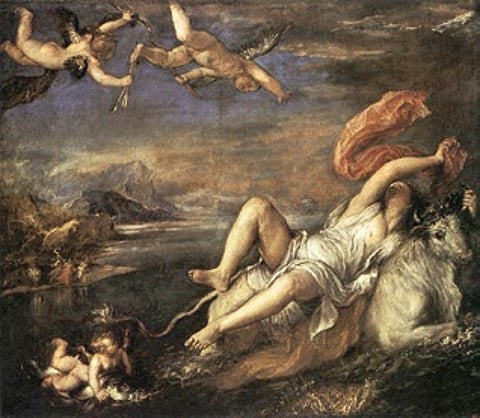

Giorgio Vasari and Ludovico Dolce were two eminent critics and art historians of the Renaissance period. They debated over the two opposing formulas that governed the Italian art of sixteenth century. Vasari’s Lives of the Artists and Dolce’s Dialogo Della Pittura both argued in favour of the theories they believed in.
Vasari, an established painter in his own right and architect who worked for the grand Duke of Tuscany, perhaps, was the most discussed art historian and critic of the Renaissance period. Even today some of his theories and artistic philosophies are highly respected across the art fraternity of the world. The art of design or the paintings that is governed by the linear content was propagated by Vasari, who was considered one of the most reliable sources of Italian Renaissance. He projected the Tuscan art, which is dominated by the linear content, as the most important.
The Venetian painters, on the other hand, were the proponents of colour as the most important factor in paintings of the Tuscan painters. Most of them Florentines, stuck to the theory that the linear contents were the controlling factor in paintings.
The concept of linear design-dominated works was mostly created by artists after creating several carefully planned preliminary drawings that acted as the basis for the work. Space, composition and design were all carefully worked out before the artist actually attempted the final work, usually in large formats. If one studies the preliminary drawings of the masters, this factor will be revealed. The drawings executed by Michelangelo for large murals like the Genesis on the Sistine chapel and those used for other works and the importance given to preparatory sketches will be seen as an important exercise before commencing the final version. Despite such meticulous attempts, a surprising factor noticeable in the creation of Michelangelo’s celebrated sculpture David is that he has used only one small clay maquét for the work. The creation of the 18 feet tall masterpiece must have been definite in his mind.
The other Renaissance master Titian, an artist from Venice, was highly acclaimed and patronised by connoisseurs across Europe. He worked with much more freedom sans linear content and brought out magnificent results in his works. A fine example of this is his highly appreciated work Rape of Europa. Though a meticulous worker in his younger days who attempted to detail and finish to microscopic dimensions, he attempted his later works in an extempore way. In a way the brush strokes and application of colours were done at an abandoned mood and gave a great dimension that was revealed only from a distance, rather than at close proximity. Perhaps, Titian was the most dominant figure among the Venetian artists.
Though linearity and colour was a domineering factor throughout art history, the debate and discussion about it became more relevant only in the sixteenth century, especially among the painters of the Renaissance period. But throughout human history, the dominant governing factor of art remained the line.
From time immemorial when cave man began to express his artistic talent by giving shape to his imagination, it was line that controlled the expression. Even in later period, most of the development of art in the west and east was dominated by the linear presence. One of the important governing factors of Egyptian art has been line. Though the dominance of colour in art has come to stay, the linear expression has remained a governing factor in the development of art from pre-historic creations to modernist expressions and it is likely to stay that way.
—yusufarakkal1@gmail.com